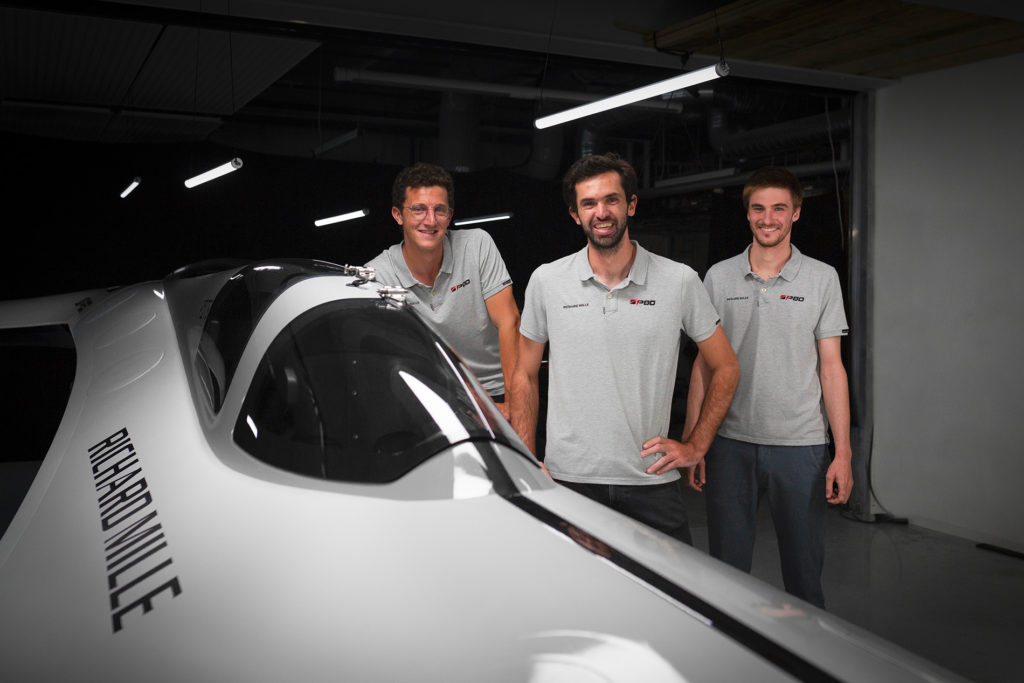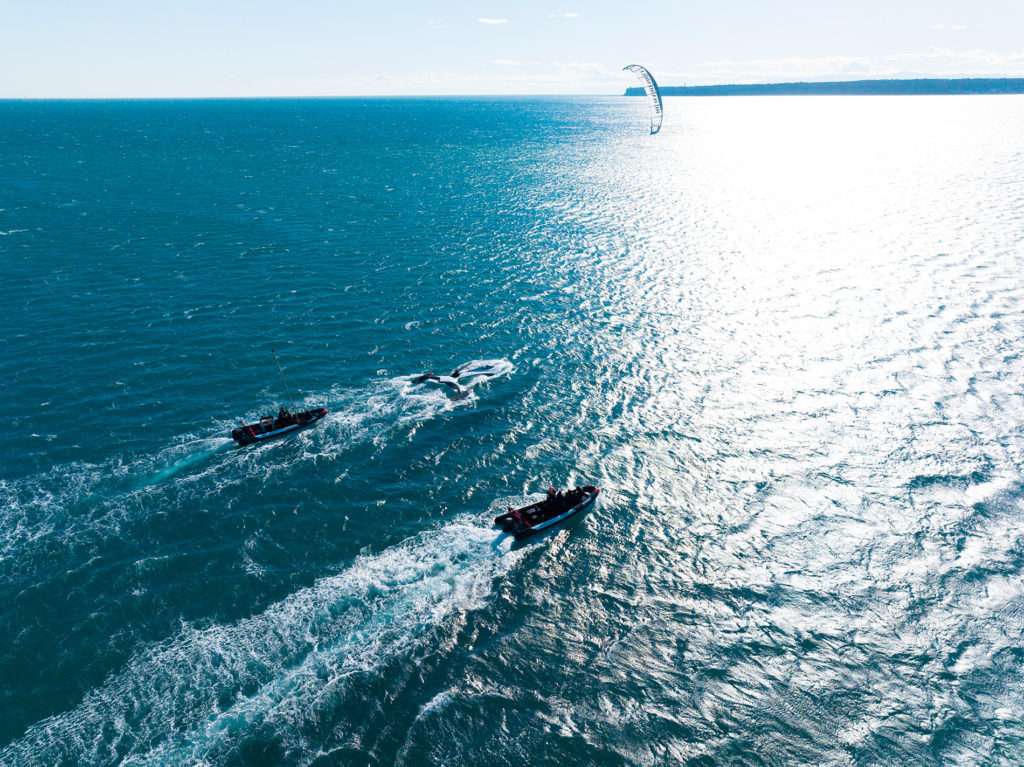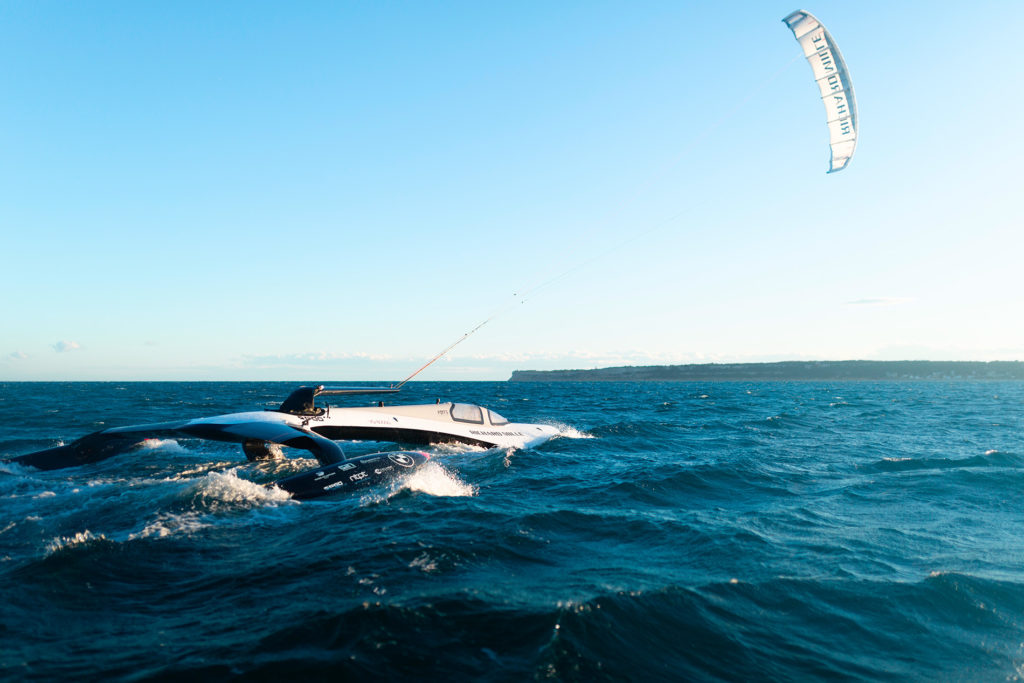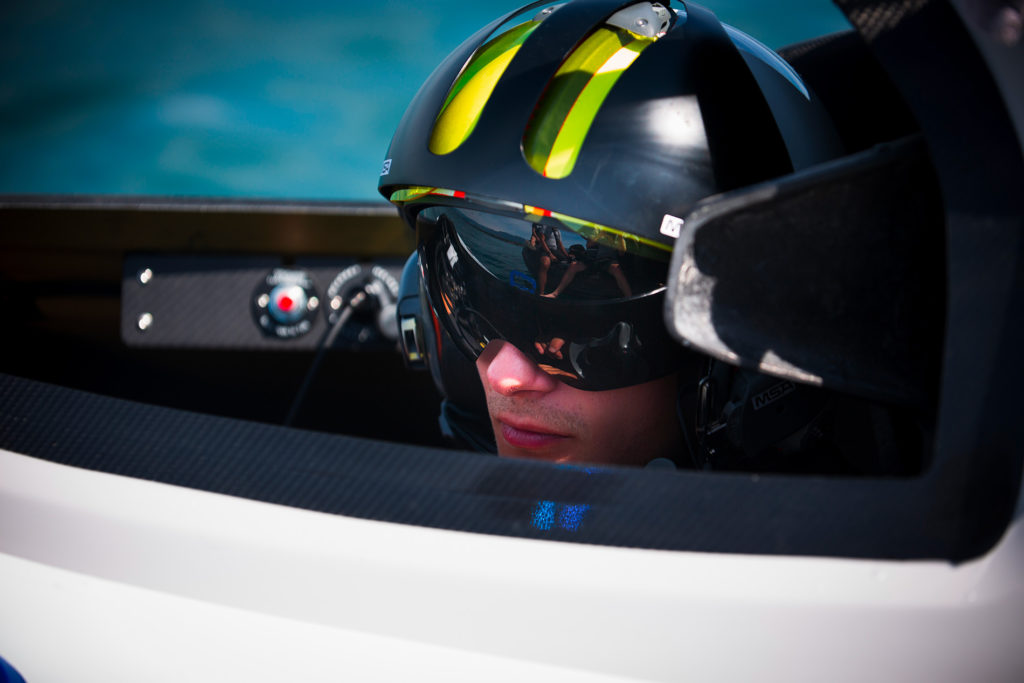The SP80’s first training sessions in Leucate, the location of their future world record attempt, have been promising. The team and the boat’s performance are gradually improving, with the ambition of a record attempt by the end of the year.
Interview by Pauline Katz
The SP80 start-up, co-founded by EPFL alumni Benoît Gaudiot, Mayeul van den Broek and Xavier Lepercq, has been developing a boat capable of reaching 80 knots since 2019, beating the current world record set by Vestas Sailrocket 2 at 65.45 knots. Since the autumn of 2023, the SP80 has been ready and testing has been proceeding apace. Benoît Gaudiot, one of the Swiss rocket’s pilots, explains what’s at stake in this crucial year.
“We feel ready
How did your first training sessions go? How do you feel inside the boat?
Even if we haven’t yet reached high speeds, the first outings have been very positive. The boat seems faithful to the projections we made. As far as sensations are concerned, they are fairly well filtered by all the equipment around us. We’re in a closed cockpit with helmets fitted with microphones. These filters allow us to concentrate on what’s essential, namely piloting the kite for me and the boat for Mayeul. When we open the canopy after a run, we’re back in the real world, much more chaotic at 35 knots!
What will it feel like at 80 knots?
We try to project ourselves, even if it’s difficult. That’s why we decided on the pilots right away, to prepare ourselves mentally. The boat is very comfortable and the sensation of speed is muted, a bit like in a modern car. We’re bound to have some adrenalin at this speed, but the aim is to have as little as possible.
How did the first sailings with the 25 M2 kite go?
They went rather well. We had already developed a take-off platform on one of the accompanying boats, with a mast to position the wing at full power. Our first take-offs with a large wing worked straight away, but it’s always a critical moment, requiring excellent coordination between the two zodiacs and us inside the cockpit. For the record, the wing will probably be around 40 M2.
Is it difficult to fly the kite?
We developed a relatively intuitive steering system. We replaced the usual helm with a steering wheel and lever. Of course, it took a bit of getting used to at first, but any good kiter, with a bit of practice, could pilot it. The key is to pay close attention to the kite’s inertia, anticipating all its movements. In the event of a problem, we can release the kite quickly with an emergency release system.


How do you communicate with Mayeul van den Broek, the boat’s second pilot?
In the cockpit, a partition separates us. We’re each responsible for 50% of a successful run, so we have to coordinate perfectly. We communicate with each other and with the zodiac team via helmets. The team also plays an indispensable role. They are our eyes and ears, as we have a relatively limited field of vision. They provide us with invaluable information on the water surface, gusts of wind… Effective communication is vital to our success.
Is it possible to train on land?
We don’t have a simulator to train with as pilots, but we do have software that simulates the boat’s performance in different conditions. It allows us to find the optimum settings, foil positioning, sail plan… This helps us enormously and maximizes our time on the water, because it’s by sailing that we learn the most!

Are you apprehensive?
There’s bound to be some apprehension, but our safety preparations have been pushed to the limit. We feel ready. We know the boat and all the systems on board by heart. We have confidence in the team and we’re gradually getting up to speed. It’s a learning process that we’re taking step by step. We also check all the boat’s systems very regularly.

How does the acceleration phase work, and what are your respective missions?
Once we’re well positioned thanks to the accompanying boats, we carry out a final safety check before launching the kite. Launching the boat is one of the most complex moments. The wing pulls strongly, the boat doesn’t move forward and Mayeul has very little influence on the steering. At 8-9 knots, we start to have more control over the rudder. Our boat is designed to go fast, so it doesn’t perform well at very low speeds. In fact, reaching 15 knots is a real critical point! That’s what we’re working on at the moment, and we’re looking forward to what’s in store next. Once we’re on schedule, the boat should pick up speed very quickly!
What next?
We’re hoping for plenty of wind and sailing this spring, and a record at the end of the year!

